Watermarks are an essential feature in the world of philately, often used to determine the authenticity and value of a stamp. This article aims to provide a comprehensive guide on detecting watermarks in stamps, a skill highly valued among collectors and experts.
Understanding Watermarks
Watermarks in stamps are akin to hidden signatures, subtly embedded into the paper to denote authenticity and origin. These marks are created during the papermaking process, often involving a variation in thickness or density of the paper, which can be seen when held up to light. The designs of watermarks are diverse, ranging from simple letters and numbers to intricate emblems and symbols.

Creation Process
The watermark is formed by varying the paper thickness during its production. In the case of stamps, this is typically done by impressing a wire pattern into the paper pulp before it dries. This leaves a thinner area in the paper, forming the watermark.
Types of Watermarks
Watermarks can be classified into several types:
- Single-Line Watermarks: Simple designs like letters or numbers.
- Multi-Line Watermarks: These consist of several lines or patterns.
- Pictorial Watermarks: Complex images or symbols, often representing the issuing authority or a symbol relevant to the stamp’s theme.
Purpose of Watermarks
The primary purpose of watermarks in stamps is to prevent counterfeiting. They also help in identifying the stamp’s origin, production batch, or specific issue, which can be crucial for dating the stamp or determining its rarity.
Historical Context
Watermarks have been used in stamp production since the early days of philately. They offer a glimpse into the history of stamp production and are often reflective of the technological and artistic trends of the time they were produced.
Understanding watermarks is more than just a technical skill; it’s about delving into the history and artistry behind stamp creation, making them a fascinating aspect of philatelic study.
Why Watermarks Matter in Philately

Watermarks play a significant role in the field of stamp collecting, offering insights into a stamp’s authenticity, rarity, and historical background. Here’s a detailed look at why watermarks are so important in philately:
Authenticity Verification
The primary role of a watermark is to authenticate a stamp. Since the specific watermark design is often unique to a particular issue or a series of stamps, it can confirm the stamp’s origin. This is particularly important for distinguishing genuine stamps from forgeries or replicas, which may not have the correct watermark or any at all.
Determining Rarity and Value
Some watermarks are used in limited editions or specific issues, making stamps bearing them rare and often more valuable. For example, a common stamp might become a rarity due to a unique watermark variant. Collectors often seek out such variations, as they can significantly influence a stamp’s market value.
Historical and Geographical Insights
Watermarks can provide valuable historical context. They can indicate the period when the stamp was issued, the technological capabilities of the time, and sometimes even the political or geographical context. For instance, changes in watermarks can reflect shifts in political regimes or administrative changes in a country’s postal system.
Cataloging and Research
For philatelists, watermarks are essential for cataloging stamps accurately. They help in the identification of different issues and variations within the same series. This is particularly important for researchers and historians who use stamps as primary sources for their studies.
Personal Enjoyment and Challenge
Many collectors enjoy the challenge of identifying watermarks and the satisfaction it brings. It adds another layer of engagement to the hobby, making stamp collecting a more enriching and fulfilling experience.
In summary, watermarks are a crucial aspect of philately, serving not just as a tool for authentication and valuation, but also enriching the hobby by providing historical context and a rewarding challenge for collectors.
Tools for Detecting Watermarks
To effectively detect watermarks on stamps, philatelists use a variety of tools, each designed to reveal these subtle features in different ways. Here’s a closer look at some of the most commonly used tools:
Watermark Fluids
These are specially formulated chemicals that temporarily increase the transparency of stamp paper without causing damage. When a stamp is immersed in or coated with watermark fluid, the thinner areas of the paper where the watermark is present become more apparent against the thicker, unmarked areas. This method is widely used due to its simplicity and effectiveness. However, it’s essential to use fluids specifically designed for philately to avoid damaging the stamps.
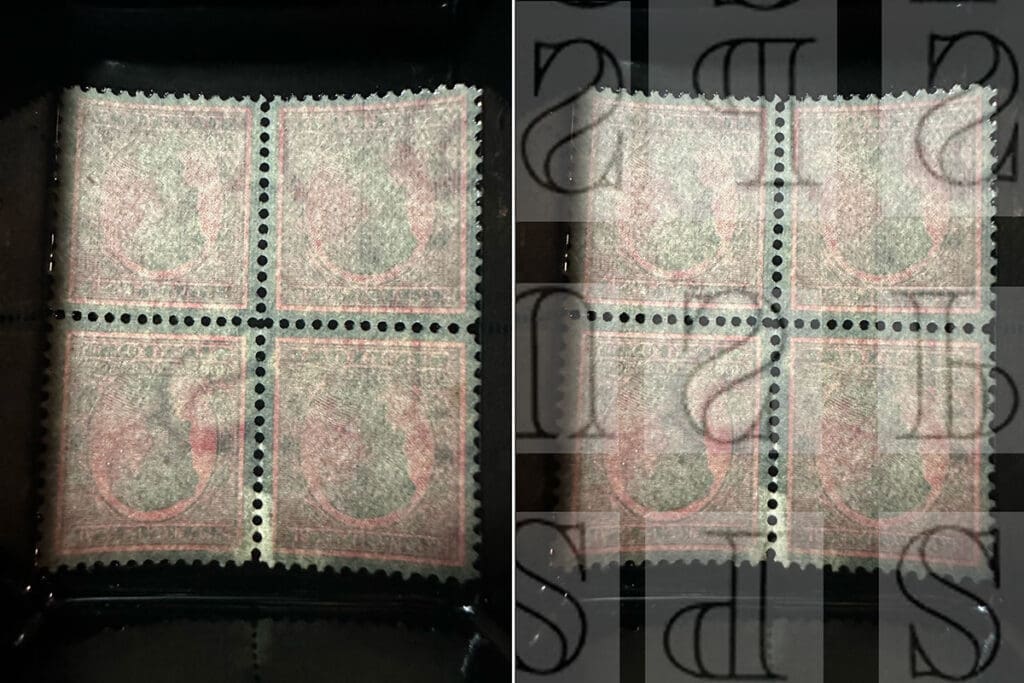
Lighter fluid can also be used in place of watermark fluid, is just as effective, and is much cheaper. However it does leave a strong odor behind. Be sure and use lighter fluid that is made for pocket lighters, like Ronsonol, and not fluids made for starting a charcoal fire.
In either case, you’ll want to get a watermark tray to place the stamps and fluid into. The tray, usually black or dark-colored, provides a contrasting background that makes the watermark more visible once the stamp is treated with the fluid. It’s an essential accessory for those using watermark fluids, as it enhances the visibility of the watermark’s details.
Signoscope
A Signoscope is a more advanced tool for detecting watermarks. It works by passing a controlled amount of light through the stamp.

The device often includes adjustable pressure plates that can flatten the stamp for clearer viewing. Watermarks become visible as variations in light and shadow on the stamp. This method is particularly useful for detecting watermarks without applying any fluids, making it a safer option for particularly rare or delicate stamps.
Ultraviolet Light
Some modern stamps may have watermarks or other security features that are only visible under ultraviolet (UV) light. A UV lamp can reveal these hidden features, providing another method for examining and authenticating stamps.

Magnifying Glass or Loupe
While not specifically designed for watermark detection, a good quality magnifying glass or loupe is an invaluable tool for any philatelist. It allows for close examination of the finer details of a stamp, including subtle watermark patterns that might be missed by the naked eye.
Each of these tools has its own strengths, and philatelists often use a combination of them to accurately identify and assess watermarks on stamps. The choice of tool can depend on the type of stamp, the clarity of the watermark, and the personal preference of the collector.
Tips for Successful Watermark Detection

Detecting watermarks on stamps requires not only the right tools and techniques but also a careful approach and attention to detail. Here are some tips to enhance the success rate in watermark detection:
Handle Stamps Carefully
Use tweezers to handle stamps and avoid touching their surface with bare fingers. Oils and dirt from the skin can damage delicate stamp paper and obscure watermark details. Always work on a clean, flat surface.
Proper Lighting
Good lighting is crucial for detecting faint watermarks. Use a well-lit area, preferably with natural light or a bright, neutral-colored artificial light. Avoid direct sunlight, as it can be too harsh and cause glare.
Patience and Practice
Watermark detection can be challenging, especially for beginners. Take your time and practice with different stamps to get a feel for how various watermarks appear under different conditions. Remember that some watermarks are more difficult to detect than others.
Reference Materials
Use stamp catalogs, guides, and online resources to familiarize yourself with the types of watermarks you might encounter. Knowing what to look for can significantly speed up the process and improve accuracy.
Cross-Verification
If you’re unsure about a watermark, use multiple methods to confirm its presence. For example, start with watermark fluid and then verify with a Signoscope or UV light. This cross-verification can help ensure accuracy.
Avoid Chemical Damage
Be cautious when using watermark fluids. Use only fluids specifically designed for philately and apply them sparingly. Ensure the fluid has completely evaporated before storing the stamp to prevent any chemical damage.
Record Keeping
Maintain a log of your findings, especially when dealing with rare or valuable stamps. Record the type of watermark detected and the method used. This documentation can be valuable for insurance purposes, future sales, or your personal cataloging.
Consult Experts
If you’re struggling to identify a watermark or want to confirm your findings, don’t hesitate to consult more experienced collectors, philatelic clubs, or professional dealers. They can offer valuable insights and advice.
By following these tips, philatelists can enhance their skills in detecting watermarks, ensuring both the integrity and the enjoyment of their stamp collection.
Detecting watermarks is a vital skill in philately, enhancing the appreciation and understanding of stamps. With the right tools and techniques, collectors can uncover the hidden details that make each stamp unique and valuable.







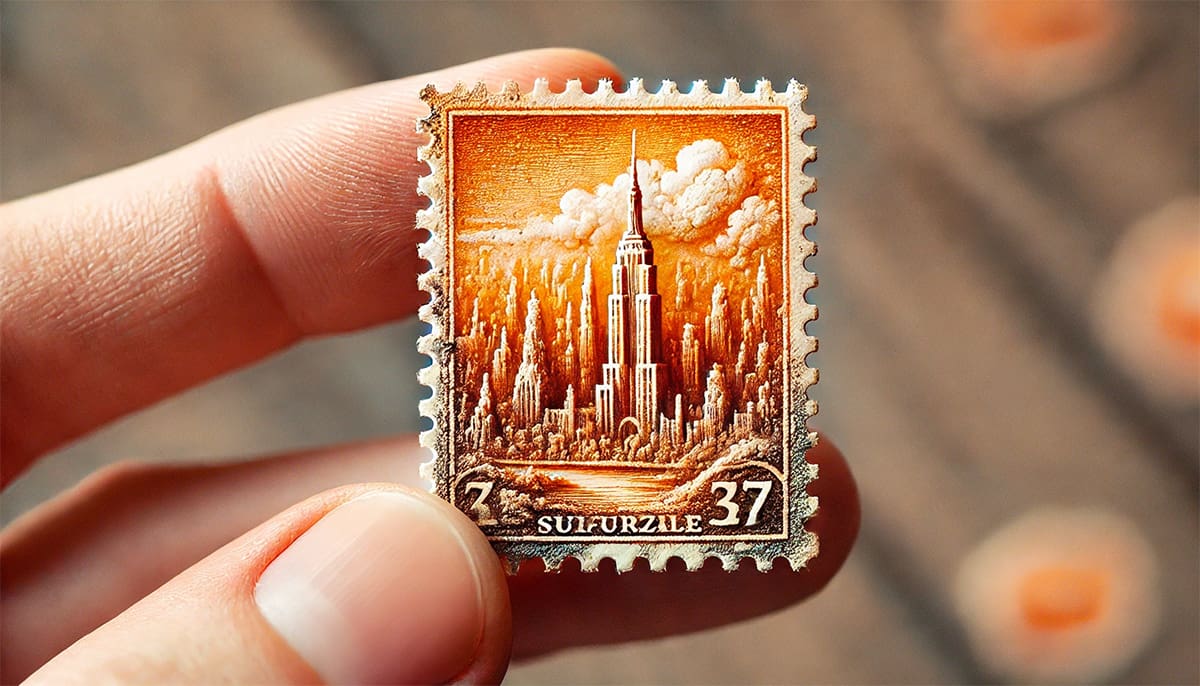





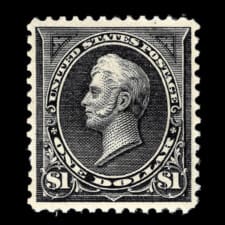

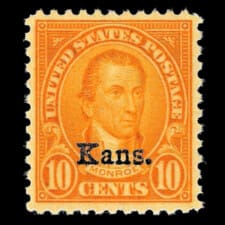
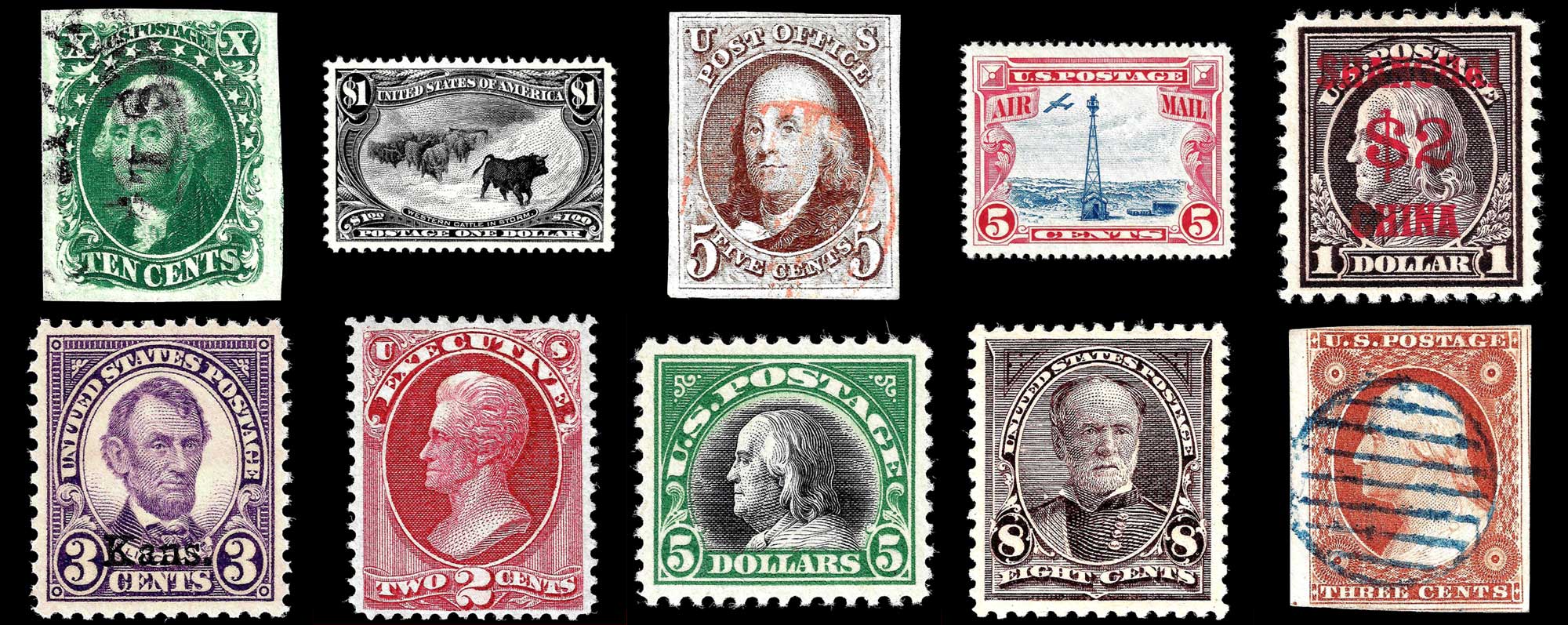
Ask A Question Or Leave A Comment